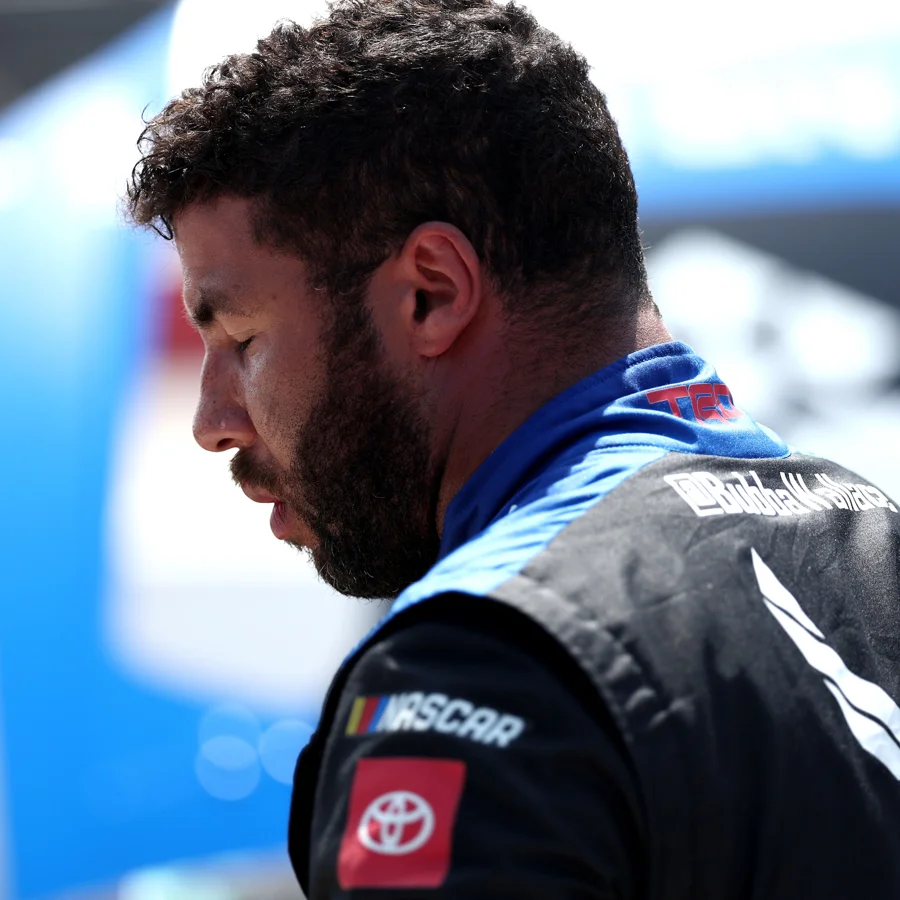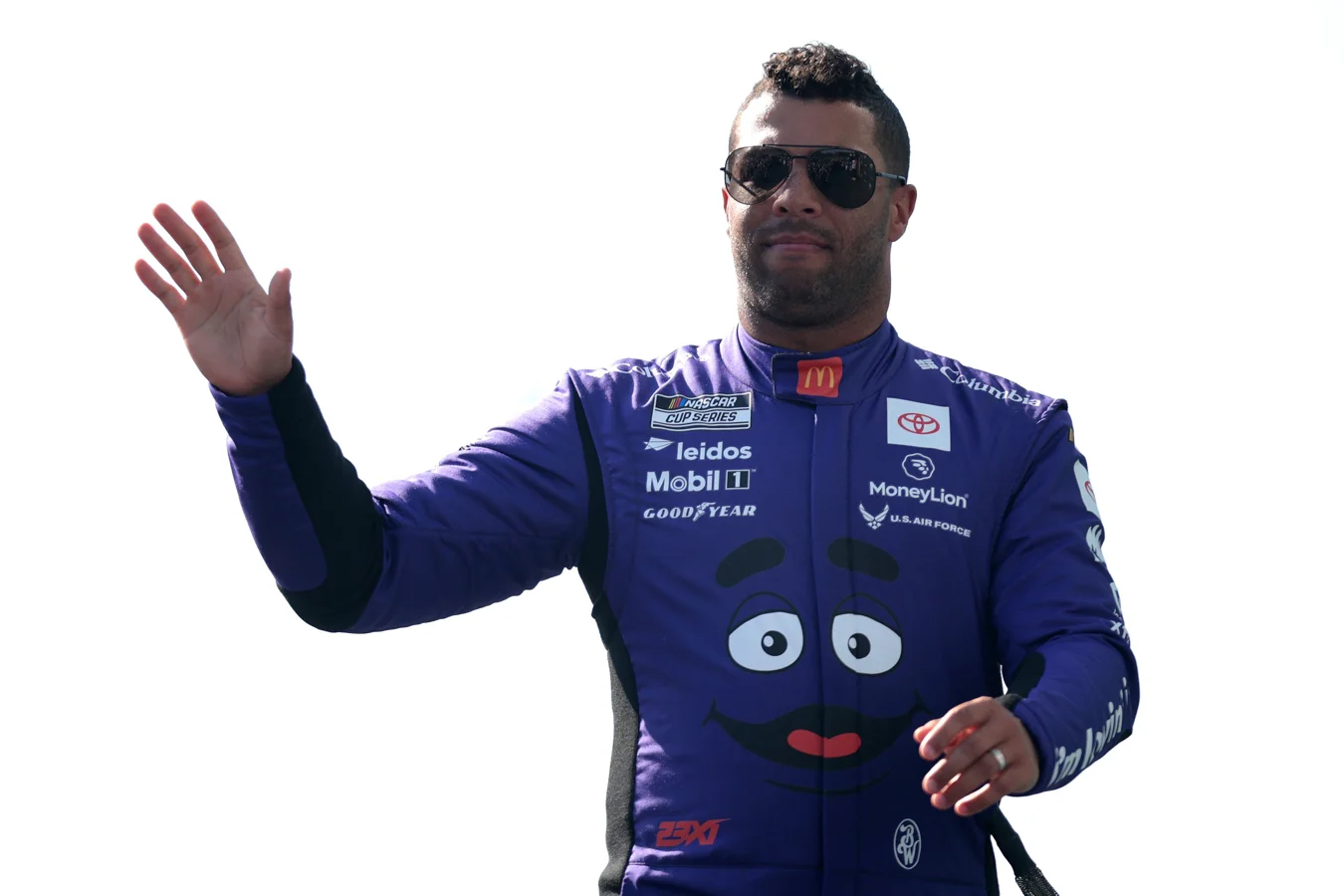Bubba Wallace on NASCAR dress code has sparked discussion after the 23XI Racing driver shared concerns that strict outfit rules off the track mean every competitor looks nearly identical, potentially hiding each driver’s unique personality. Speaking about his personal style, Wallace explained that standard attire rules, largely shaped by sponsors and teams, end up muting individuality in favor of uniformity at NASCAR events and media appearances.
Drivers Blending In Due to Standard Dress Rules
NASCAR encourages all competitors to appear professional when attending official events, usually by wearing team polos, sponsor-branded clothes, or business casual outfits suited for the occasion. Within areas like press rooms or hospitality suites, relaxed or casual clothing is discouraged, leading to a sea of drivers dressed much the same, except for logos and branding details.
Bubba Wallace is vocal about his desire to express himself through fashion, rather than blend in. He highlighted how the requirements leave little room for individuality, aside from different manufacturer or team logos on the same style of black polo. Wallace told Yes Network,
“For me, I just want to be myself… I didn’t have a stylist. My stylist is myself, so I dress myself. I feel like you can kind of see people’s personalities from, how they dress. Our sport, as a whole, has I feel like a problem of, it goes back to sponsorship stuff, though. Everyone has to be in a black polo and look the same, just different… manufacturer logos, different team logos on there.”
The influence of sponsors and contracts pushes drivers to dress uniformly, making it harder for them to show who they really are away from the racetrack. When asked about how that could change, Wallace suggested a simple but risky approach, saying,

“You just show up and not put the polo on, and you just say, ‘Hey, here we are’. You see me, this is it, and it’s okay. For the people watching back at the shop, it’s okay. It’s totally okay.”
Wallace stands out for his willingness to challenge expectations and take ownership of his self-presentation, both in terms of appearance and speaking up on important issues. His openness has been visible beyond dress code debates, including major moments like calling for NASCAR to ban the confederate flag and pushing for broader conversations about diversity in racing. Public reactions to his outspoken approach have been mixed, but Wallace remains comfortable facing criticism.
The question of attire, for Wallace, connects directly to bigger themes about how tradition and corporate requirements can limit a driver’s chance to shape their own public image and connect with fans on a personal level.
Calls for NASCAR to Embrace Individuality and Grow Beyond Its Core
As NASCAR faces declining viewership and questions about how to appeal to new audiences, Wallace points out that the sport still lacks the global star power seen in other racing series. While drivers like Lewis Hamilton and Max Verstappen are recognized worldwide, NASCAR’s most successful talents can walk largely unnoticed outside the motorsports community—even in major American cities like New York.
In an interview with Jeff Gluck for a 12 Questions segment, Wallace explained,
“We are very inside of our own four walls, and that’s it. I’m not sure on that, because you can take Lewis Hamilton or Max Verstappen and drop them anywhere in the world and people go crazy, right? You drop myself or Chase Elliott or Ryan Blaney in London and no one knows who we are. You drop us in New York City and maybe we get one or two people, right?
Wallace went on to reflect on changes across professional sports, saying,
Obviously, a lot of people wish it was back to how it was in the heyday. But no sporting league, no sanctioning body, is the way it was 15 or 20 years ago. Everything has evolved and it’s changed. So I don’t know what the magic answer is to that.”
For Wallace, creating bigger personalities and marketing stars outside of the usual NASCAR bubble is key to the sport’s future. He highlighted drivers like Kyle Larson, who have cross-audience appeal, but noted that even the most recognized NASCAR names remain mostly confined to the sport’s fanbase and rarely achieve broader visibility. Wallace argues that to grow, NASCAR must support drivers as cultural figures, allowing them to ditch the strict uniformity—both literally and figuratively—in favor of real, relatable personalities.
While it remains uncertain if NASCAR will reconsider its dress code or take steps to encourage more individuality, Wallace’s comments have brought renewed attention to how tradition and sponsorships can isolate the sport. Fans and industry observers are left weighing whether showing more of drivers’ personalities—on and off the track—could help bring NASCAR and its competitors to a wider, more passionate audience, both in the United States and abroad.
